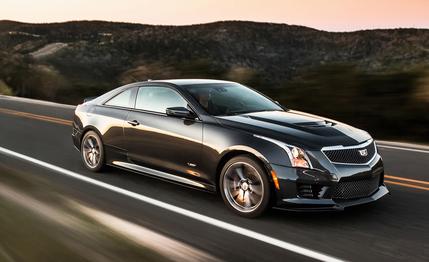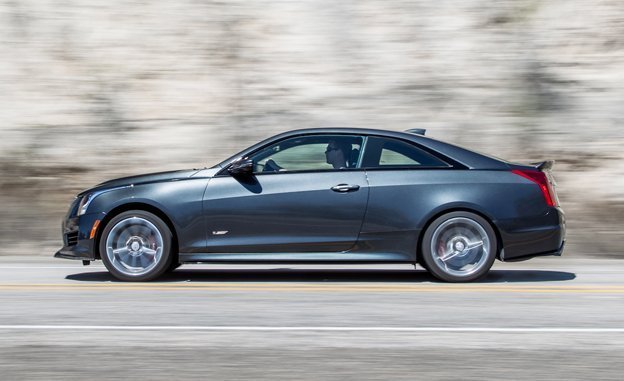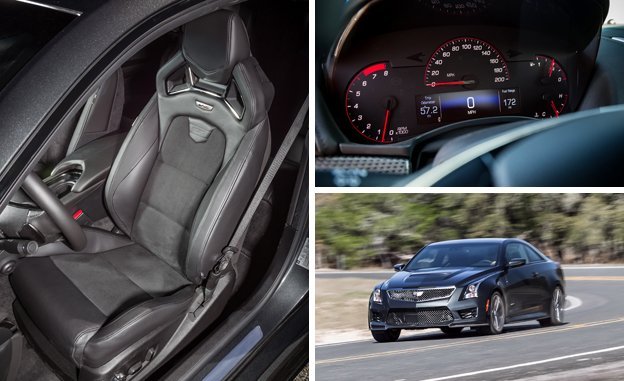
 Instrumented Test
Instrumented Test
The eccentric tenor of Austin, Texas, goes so far beyond the stereotypes that it could pass for parody. In the city’s South Congress neighborhood, for example, you get your kale juice, fried chicken, and breakfast tacos not from a food truck, but from food Airstreams and food shipping containers. The local thrift shop shares a wall with American Apparel, and everybody pretends not to notice that the hipster counterculture is funded by Range Rover drivers quaffing $20 cocktails.
The off-kilter atmosphere is so pervasive here that it’s normal. What is truly strange in Austin is brash, unashamed indulgence and capitalism without the pretense of keeping Austin weird. Like a $63,660 sports coupe from a brand so tragically unhip that it’s relocating people to New York City with the hope that speeding taxis will splash them with trendiness and relevance.
If you place more stock in what’s good than what’s trending, though, you need to know about the 2016 Cadillac ATS-V, a 464-hp BMW challenger that finally captures what Cadillac has chased for 13 years with varying success. With the ATS-V coupe and sedan, Cadillac has mastered the complete package of performance, style, and driving bliss. To arrive at that conclusion, we pointed the ATS-V coupe into the heart of Texas Hill Country, 180 miles southwest of the state capital by way of Sabinal, population 1695, where we missed the annual Wild Hog Festival and Craft Fair by just one day. The billboard showing a grown man midflight as he’s bucked from a hirsute swine was a reminder that the truly weird parts of Texas exist well outside of city limits.


You arrive in Hill Country by roads both flat and fast. There’s a freeway with an 85-mph posted limit, plus 75-mph two-lanes with curves that could roll a pickup doing legal speeds. Other bends are so long and gentle that we safely blasted through at triple-digit velocities. The main attraction is a network of tighter bends and roller-coaster undulations carved by the state of Texas into the limestone-and-granite moonscape. You have to work to find a boring road here, though there are few more fun than routes 335, 336, and 337, cunningly branded so that local gas stations can sell T-shirts declaring “I rode the Three Sisters.”
The ATS-V is the product of a small team with speed encoded in its members’ genes. On weekends, you can find several development engineers racing third- and fourth-generation Chevrolet Camaros against each other in local SCCA competition. Chief engineer Tony Roma previously served as program manager for the Camaro ZL1. It’s no surprise then that the ATS-V borrows a handful of tricks (and parts) from GM’s Corvette and Camaro speed shops, including an electronically controlled limited-slip differential, magnetorheological dampers, and the Performance Traction Management system.
Tour, sport, and track modes massage steering calibration, throttle mapping, and damper behavior. There are more settings for the stability control than there are cylinders in the engine. Launch control, no-lift shift, and rev-matching logic give the six-speed manual a fighting chance against flappy paddles with shift times measured in milliseconds.

 Top right: V-specific gauges are an improvement that leaves room for improvement. Left: Optional Recaro seats grip as well as the Michelin tires.
Top right: V-specific gauges are an improvement that leaves room for improvement. Left: Optional Recaro seats grip as well as the Michelin tires.
For all the computer-controlled possibilities, though, the ATS-V makes a single impression no matter the settings. Instantaneous turn-in, balanced cornering, and palpable steering feel are virtues of the car, not the electronics. Here, the performance aids only enhance the inherent goodness of the car rather than compensate for bad behavior as many “torque vectoring” systems do. Where most automakers speed up throttle tip-in to fake the feeling of a quicker car in sport mode, Cadillac slows the throttle progression in the track setting to make modulation easier. Thanks to the Magnetic Ride Control dampers that adjust quicker and with more bandwidth than traditional adaptive shocks, a single compression and rebound quells every body movement.
Hill Country’s world-class topography is compromised by third-world pavement best described as coarse gravel suspended in a tar adhesive. These roads don’t support the 0.97 g of grip we measured on the skidpad, though you can still marvel at the obedient chassis, the gentle breakaway, and the easy catch of slides at the lowered limits of the road. PTM’s third-most aggressive mode (of five total settings) is the perfect safety net, leaving you just enough rope to tie a noose, but not so much that you can hang yourself.
On roads this coarse in a car this connected, you feel the texture of the surface change in your hands at the same moment your ears register a pitch shift in the thrum of the tires. In small wiggles and twitches, the steering wheel telegraphs the groove where an overloaded truck creased the pavement and the bulge where the earth has never stopped settling.